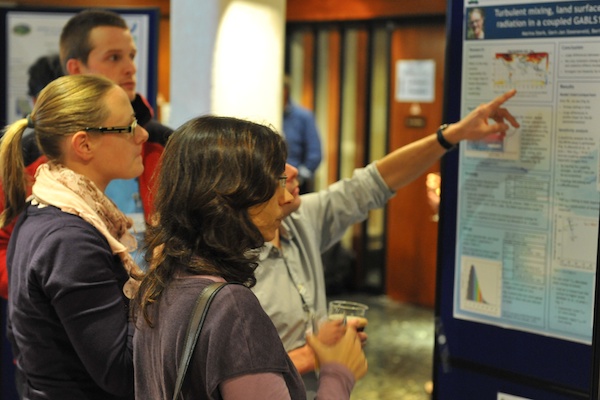

A workshop was held at ECMWF on "Diurnal cycles and the stable atmospheric boundary layer" from 7 to 10 November 2011. The workshop attracted about 60 participants, from Europe and other parts of the world, including Japan, North and South America and Australia.
The workshop was organised together with the GEWEX Atmospheric Boundary Layer Studies (GABLS) working group and co-sponsored by ECMWF, the World Climate Research Programme (WCRP), the Global Energy and Water Cycle Experiment (GEWEX), and GABLS.
One of ECMWF's strategic goals is to improve the quality of near-surface weather products like temperature and wind and atmospheric composition. It is well known that the diurnal cycles of temperature and wind are strongly influenced by small-scale atmospheric processes in the stable boundary layer, in particular by turbulent diffusion, gravity waves and radiation, but also by the thermal coupling with the underlying soil through vegetation and snow. Most large-scale atmospheric models utilize rather diffusive boundary layer schemes resulting in stable boundary layers that are too thick and which show too little wind turning. Climate projections also show strong temperature signals at high latitudes which are affected by the processes mentioned above.

The workshop included presentations and posters on all these aspects and the options improving large-scale models were discussed extensively. Two key conclusions of the workshop are: (i) meso-scale variability and terrain heterogeneity are essential components of the transport process, and (ii) boundary layer diffusion can not be studied on its own but should be seen as part of the coupled land/atmosphere system.
For presentations and the poster abstracts see here.
